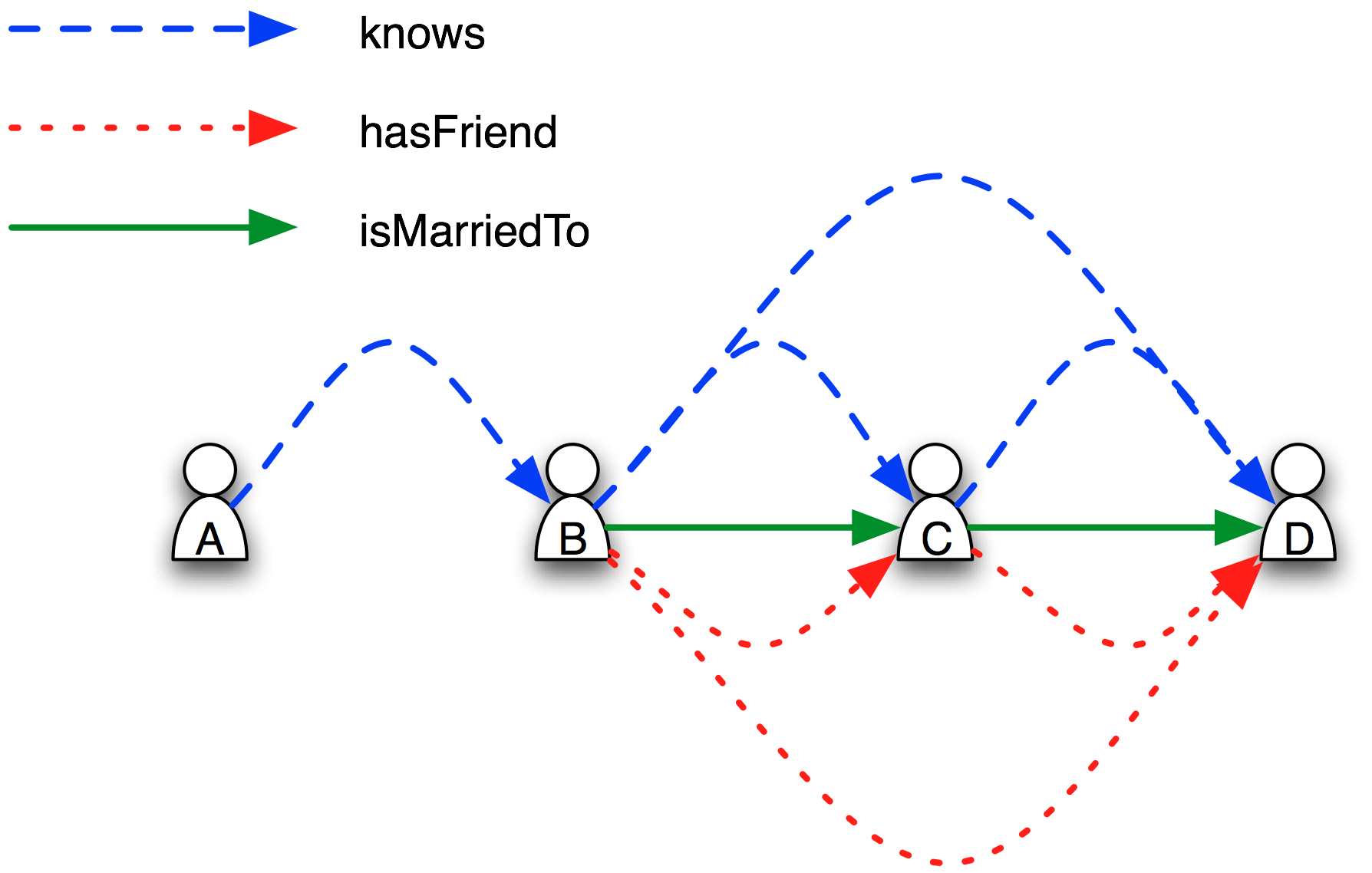on August 8, 2013 by in Uncategorized, Under Review, Comments (0)
Friends and Family: Exploring Transitivity and Subproperties
Summary
An exploration of the relationship between subproperties and property characteristics, in particular transitivity.
Author
Sean Bechhofer
Information Management Groups
School of Computer Science
University of Manchester
Oxford Road
Manchester
United Kingdom
M13 9PL
sean.bechhofer@manchester.ac.uk
Property Characteristics and Subproperties
Transitive properties can be very useful in ontologies. Recall that a property P is transitive if and only if the following is true:
* For all x, y, and z: P(x,y) and P(y,z) => P(x,z)
An example of a transitive property is “ancestor”. Any ancestor of an ancestor of mine is also an ancestor of mine. OWL provides us with an axiom for stating that a particular property is transitive.
ObjectProperty: ancestor Characteristics: Transitive
The notion of subproperties are also useful. For a property Q, R is a subproperty if and only if
* For all x, y: R(x,y) => Q(x,y)
An example of a subproperty relationship is “hasParent” and “hasFather”. Any two individuals that are related via the father relationship must be related via the parent relationship.
ObjectProperty: hasParent ObjectProperty: hasFather SubPropertyOf: hasParent
Sometimes there is confusion over the way in which characteristics like transitivity interact with the sub/super property hierarchy. As far as transitivity is concerned, the characteristic is not “inherited” by sub-properties — we cannot infer that the sub property of a transitive property is transitive. The same holds for super properties.
To illustrate this, consider the following example. We have three (object) properties: knows, hasFriend, marriedTo. One of these (hasFriend) is transitive (now you might question this as a piece of modelling, but please just go with my rosy world-view that all the friends of my friends are also friends), and the properties are arranged in a hierarchy. In Manchester syntax we would have:
ObjectProperty: knows ObjectProperty: hasFriend Characteristics: Transitive SubPropertyOf: knows ObjectProperty: isMarriedTo SubPropertyOf: hasFriend
And yes I know that expecting marriage to imply friendship is again hopelessly optimistic, but I’m a hopeless optimist.
Now, consider a domain with four elements, Arthur, Betty, Charlie and Daphne. They are related as follows:
* Arthur knows Betty.
* Betty knows Charlie and Daphne.
* Betty hasFriend Charlie and Daphne.
* Betty isMarriedTo Charlie.
* Charlie knows Daphne.
* Charlie hasFriend Daphne.
* Charlie isMarriedTo Daphne.
The situation is as pictured below.
If we look at the ontology presented above, we can see that all the axioms hold — the subproperty axioms are being respected, as is the transitivity of hasFriend. Thus this situation is a model of the ontology.
Now if we consider isMarriedTo, we can see that our conditions for transitivity do not hold. There are three elements with isMarriedTo(Betty,Charlie) and isMarriedTo(Charlie,Daphne), but we do not have isMarriedTo(Betty,Daphne). So we cannot infer that isMarriedTo is transitive from the axioms. Similarly, there are three elements where knows(Arthur,Betty) and knows(Betty,Charlie) but we don’t have knows(Arthur,Charlie).
Recall that the inferences we can make from an ontology or collection of axioms are those things that necessarily hold in all models of the ontology. This little sample model provides us a “witness” for the fact that we cannot infer that knows is transitive from the axioms. Similarly, we cannot infer that isMarriedTo is transitive.
Of course, this is just saying that we can’t in general make such an inference. We are not saying that superproperties cannot (sometimes) be transitive. If we add to our interpretation the fact that Arthur knows Charlie and Daphne, then in this interpretation, knows is indeed transitive. And if we allow Betty to marry Daphne — hey, it’s 2013! — then we have a transitive subproperty (in this interpretation).
On the topic of transitivity and sub properties, the thesaurus representation SKOS uses a common modelling pattern, where a non-transitive property (skos:broader) has a transitive superproperty (skos:broaderTransitive) defined. The superproperty is not intended to be used for asserting relationships, but can be used to query for transitive chains of skos:broader relationships (assuming our query engine is performing inference). As we now know, this doesn’t mean that skos:broader is necessarily transitive.
This pattern is also often used for representing partonomy. Here we would use a (non-transitive) hasDirectPart for asserting parts of a whole, with a transitive superproperty hasPart allowing us to query the transitive closure. We can use counting with hasDirectPart — for example min or max cardinality restrictions — which we would not be able to do in OWL DL if hasDirectPart was transitive, due to restrictions relating to simple properties (see the OWL2 Structural Specification).
For other property characteristics the situation is different. For example, a subproperty of a functional property must be functional. Why? We’ll leave that as an exercise for the interested reader……
Tags: inference, ontology, reasoning, transitivity

No Comments
Leave a comment
Login